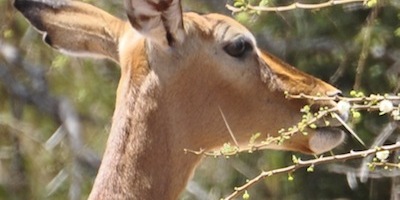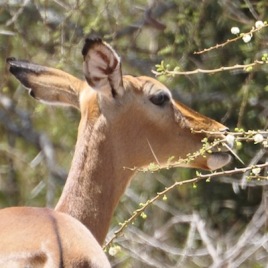
In areas where predators keep down populations of herbivores like impala, acacia trees flourish. A lack of predators forces trees to rely on other forms of defense, like thorns. A new study underlines how human impact on carnivores like wild dogs could alter the African landscape (Photo credit: Adam T. Ford)
A new study shows the presence – or absence – of carnivores can have a big impact on how many and what kind of trees grow in a landscape.
Working in central Kenya, researchers looked at different tree species – with or without protective thorns – in areas where herbivores get eaten by their predators, namely African wild dogs and leopards.
The researchers found that the most dangerous areas for herbivores have more trees in them, and herbivores avoid these risky areas, even though trees are also food for herbivores. As a result, the thorny tree dominated in safe areas, while the less-thorny and preferred tree dominated in dangerous areas.
The authors suggest that human impacts on carnivore populations could have knock-on effects for tree diversity and the ecosystem as a whole.
Original research paper published in Science on October 16, 2014.
Names and affiliations of selected authors


